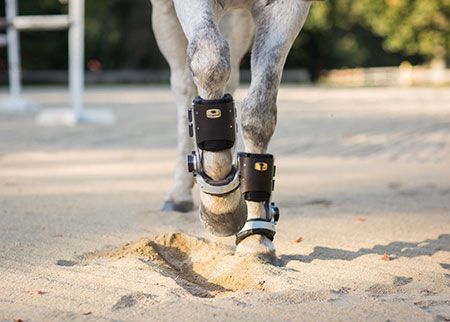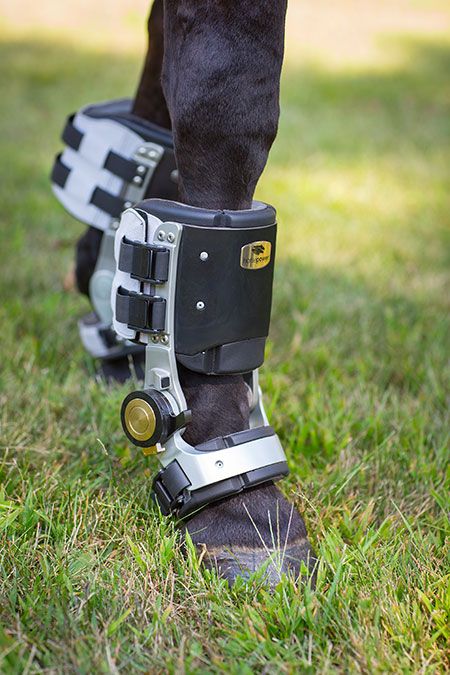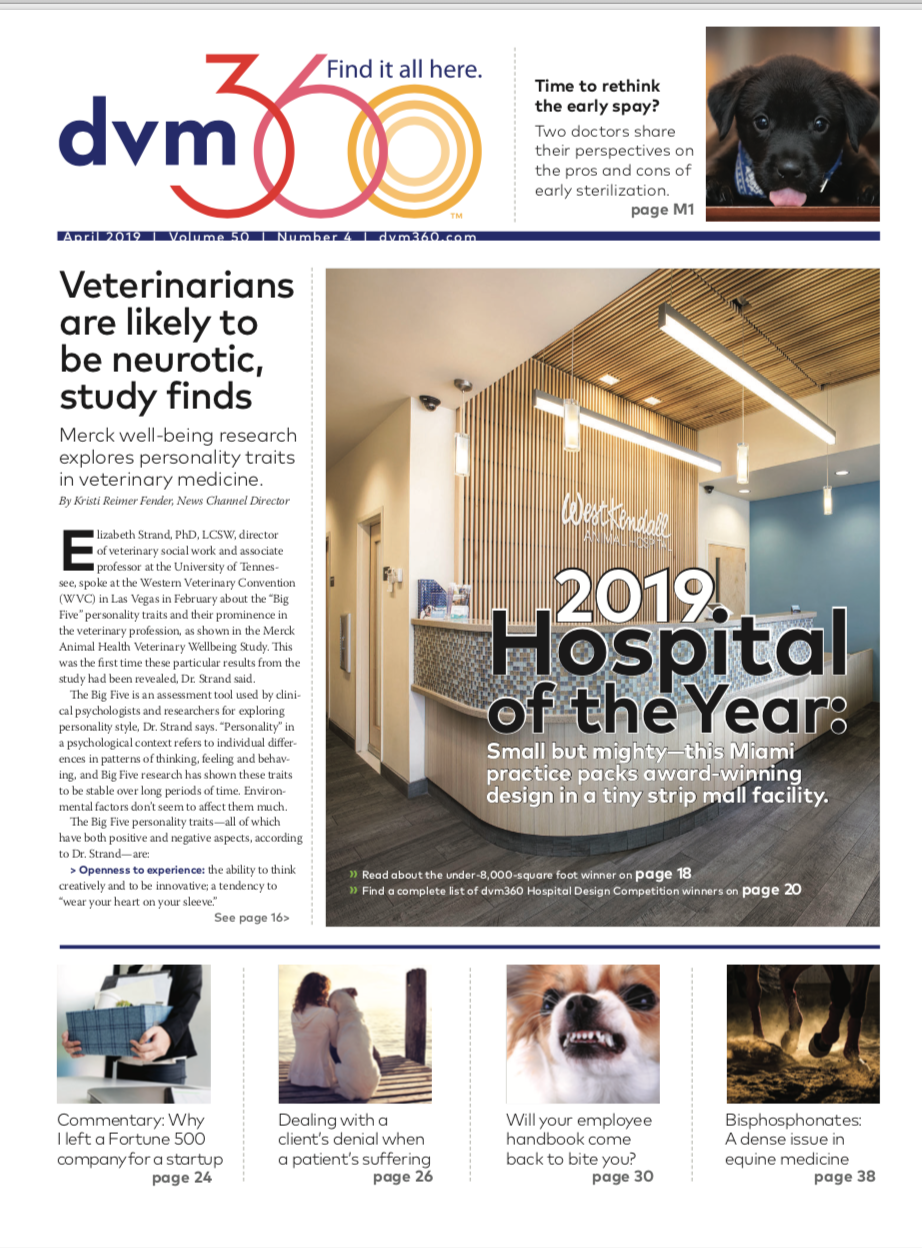New orthotic gets injured horses moving faster
The FastTrack, with its high-grade metal, heat-formed pad and golden dial lets equine veterinarians choose the movement thats right for a horse recovering from a soft-tissue injury.
Photos courtesy of Horsepower Technologies

You know those sci-fi animals with bionics and cybernetic implants and stuff? This isn't that, but it's pretty cool.
Images of Horsepower Technologies' FastTrack-which bills itself as the first rehabilitative orthotic for horses-caught our eye in its look as it supports and limits the movement of injured horses in a unique way. One of FastTrack's biggest advocates-the company's CEO, Mouli Ramani-says it started with a thought in the minds of a disappointed equine practitioner, Dr. Wendy Drumm.
“She had to euthanize one of her horses,” Ramani says. "And she thought, why? Like an injured human, maybe the horse wouldn't run as fast or as hard again, but it didn't need to be euthanized.”
The special device takes the weight off the injured flexor apparatus and limits movement to the adjustable angle the veterinarian wants to see in the rehabilitation process.
“What typically happens is a horse owner leaves the horse in the stall and waits for recovery,” Ramani says. “The horse hates it, the people hate it.
“The fundamental concept is, take away the stresses and strains that come down on the horse's flexor apparatus down the back of the horse's limb and redirect that through our structure onto the horse's bones."
Like human ski boots you get fitted for in store, the FastTrack sports a specialized thermal pad (you can buy or rent the device to mold the pad) that make a snug and abrasion-avoiding fit on the horse's limb.
“We thought pads, like the memory foam in a cushion, would work,” Ramani says, “but in fact testing and advice from veterinarians said that wouldn't be sufficient.”
Ramani is impressed with the structure itself, especially the “aircraft-grade aluminum and steel to support a fetlock the size of my wrist on a 1,500-pound horses.”
In addition to support, the orthotic also gives the ability for riders and veterinarians to get the horse moving soon, while still restricting the horse's movement to avoid further injury.
“When the horse is injured, you won't start trotting right away, you'll start with a slow walk,” Ramani says. “But how do you get the horse to move at the speed you want it to move? With the gold dial, you restrict the fetlock angle and can dial in a walk, a trot or a center.”
Ramani says the weird restriction doesn't seem to freak out the horse either: “Almost all of the horses have almost no problem after 30 seconds or a minute of walking with it,” he says. “We've not had any horses reject the devices.”
The biggest challenge so far to an equine veterinary community excited about a powerful support for injured horses is explaining the limitations of what looks like a real miracle device.
“It's designed for horses with soft-tissue injuries,” he says. “We've had horse owners come to us with degenerative bone issues, a fetlock that's dropped completely, and we can't do anything to help that horse. We explain what it's good for and what it's not good for. We provide support and comfort during rehabilitation.”

Misuse of the device is part of the reason Horsepower Technologies doesn't sell the FastTrack direct to nonveterinarians.
They are sold only in pairs, at a cost of $2,000, because, of course, you don't want the horse overcompensating with its unbraced leg.
